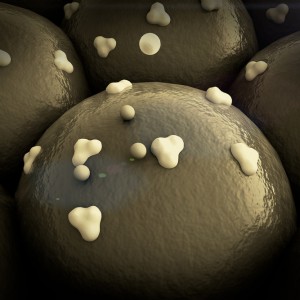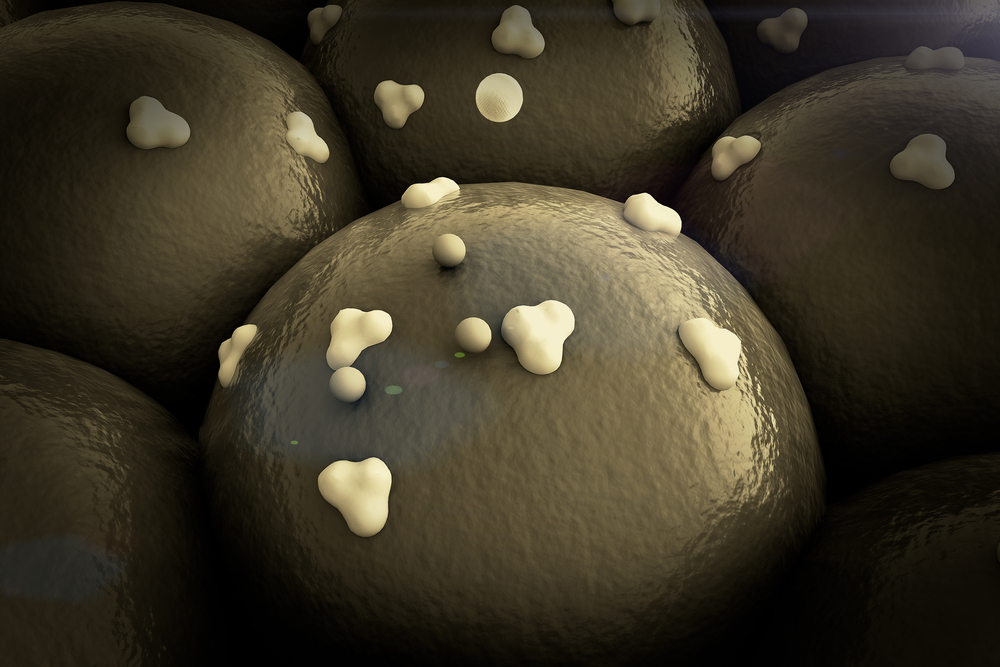 In a new study entitled “Regulation of Glutamine Carrier Proteins by RNF5 Determines Breast Cancer Response to ER Stress-Inducing Chemotherapies” researchers discovered a factor, the ubiquitin ligase RNF5, that regulates the levels of glutamine, an essential nutrient for cancer cells that determines how cancer cells respond to anticancer therapies. The study was published in the journal Cancer Cell.
In a new study entitled “Regulation of Glutamine Carrier Proteins by RNF5 Determines Breast Cancer Response to ER Stress-Inducing Chemotherapies” researchers discovered a factor, the ubiquitin ligase RNF5, that regulates the levels of glutamine, an essential nutrient for cancer cells that determines how cancer cells respond to anticancer therapies. The study was published in the journal Cancer Cell.
The mechanism of how cancer cells induce gluthamine uptake is still unclear. In this study, the authors identified how two glutamine carrier proteins, SLC1A5 and SLC38A2, are regulated and how this impacts gluthamine uptake. The team of scientists at Sanford-Burnham Medical Research Institute discovered that both gluthamine carrier proteins are targeted by the ubiquitin ligase RNF5 – a critical player of the Endoplasmic Reticulum (ER) Stress Response – a pathway activated when there is accumulation of misfolded proteins inside the cell.
RNF5, an ER-associated E3 ubiquitin ligase, regulates proteins’ stability and contributes to misfiled protein clearance. Notably, RNF5 activity is increased in advanced cases of breast cancer. In this study the authors treated breast cancer cells with a chemotherapy-ER stress inducing agent, paclitaxel, and observed RNF5 targets the glutamine carrier proteins SLC1A5/38A2, ubiquitinating it and targeting its degradation. Upon their degradation, the cells inhibit gluthamine uptake and, as a consequence, cancer cell’s proliferation while inducing autophagy and cancer cell death. The role of RNF5 in mammary tumorigenesis was further evaluated and RNF5 inhibition in mouse models of breast cancer resulted in tumor growth and in resistance to paclitaxel treatment.
[adrotate group=”3″]
The authors note that their findings show RNF5 controls gluthamine uptake and suggest that in the future patients may be tested for both RNF5 and glutamine carrier protein levels to understand and identify those who are more prone to respond to paclitaxel (as well as other taxanes) based therapy.
Ze’ev Ronai, Ph.D., scientific director of Sanford-Burnham Medical Research Institute, La Jolla campus commented in a press release, “Not all tumors are equipped to respond to paclitaxel therapy. Using a cohort of more than 500 breast cancer patient samples, we found that only 30 percent of tumors exhibit high levels of RNF5 and low levels of glutamine carrier proteins—the optimal profile for response to paclitaxel.” He added, “We also used this patient cohort to test the predictive value of measuring levels of glutamine carrier proteins as a prognostic marker. Our results indicate that these proteins are an outstanding marker of patient outcome, as good as currently used markers. We have started screening for inhibitors of glutamine carrier proteins as a potential new target for breast cancer treatment.”

